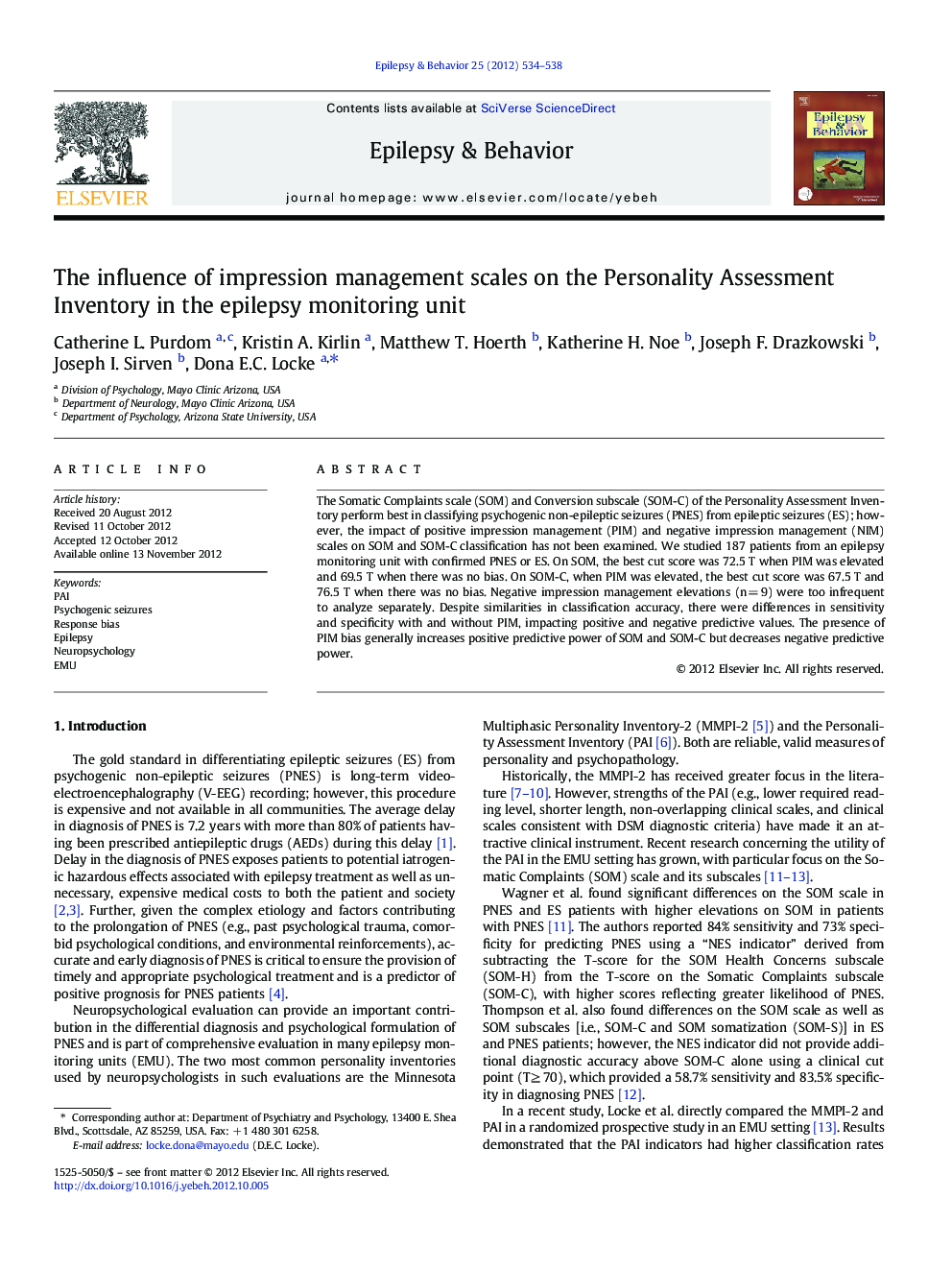| Article ID | Journal | Published Year | Pages | File Type |
|---|---|---|---|---|
| 6013816 | Epilepsy & Behavior | 2012 | 5 Pages |
The Somatic Complaints scale (SOM) and Conversion subscale (SOM-C) of the Personality Assessment Inventory perform best in classifying psychogenic non-epileptic seizures (PNES) from epileptic seizures (ES); however, the impact of positive impression management (PIM) and negative impression management (NIM) scales on SOM and SOM-C classification has not been examined. We studied 187 patients from an epilepsy monitoring unit with confirmed PNES or ES. On SOM, the best cut score was 72.5 T when PIM was elevated and 69.5 T when there was no bias. On SOM-C, when PIM was elevated, the best cut score was 67.5 T and 76.5 T when there was no bias. Negative impression management elevations (n = 9) were too infrequent to analyze separately. Despite similarities in classification accuracy, there were differences in sensitivity and specificity with and without PIM, impacting positive and negative predictive values. The presence of PIM bias generally increases positive predictive power of SOM and SOM-C but decreases negative predictive power.
⺠Validity scales of the PAI impact scales predictive of PNES ⺠NIM elevations (n = 9) were too infrequent to analyze separately. ⺠On SOM, the best cut-off was 72.5 T with PIM and 69.5 T without. ⺠On SOM-C, the best cut-off was 67.5 T with PIM but 76.5 T without. ⺠The presence of PIM increases PPV of SOM and SOM-C but decreases NPV.
